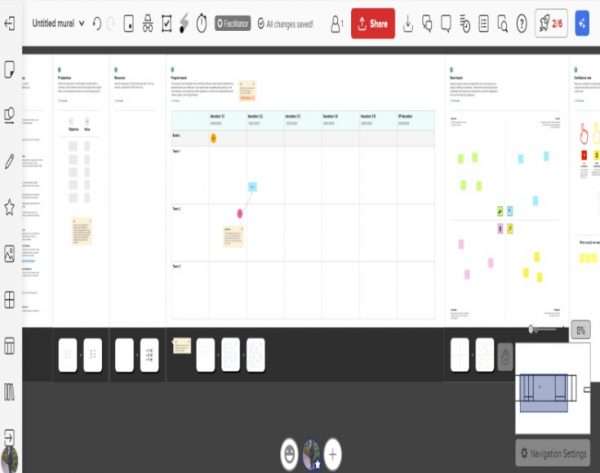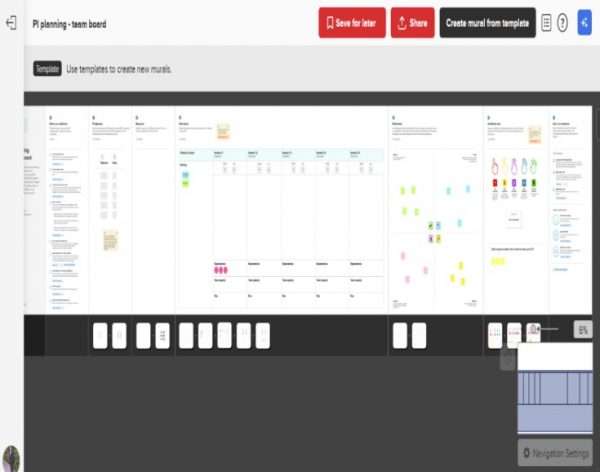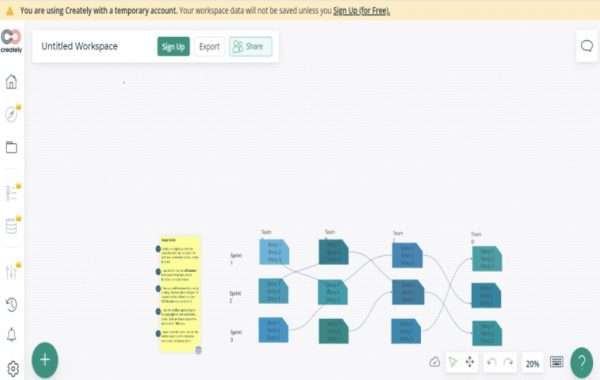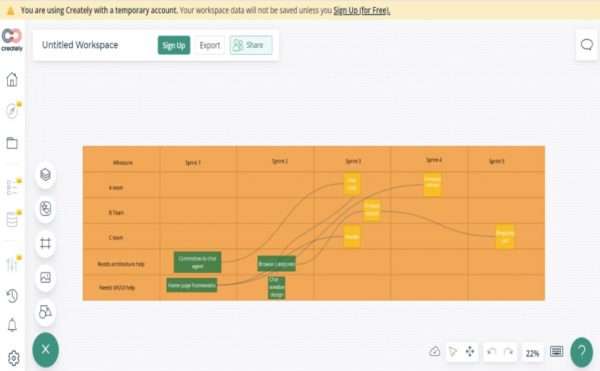Many agile facilitators and product teams use PI Planning template for team alignment and to bring the team towards a shared vision. PI stands for Program Increment and PI Planning happens in person, but with hybrid work gaining popularity, it is conducted remotely. This template enables an overview of events with frames that allows to execution of the process smoothly.
PI Planning SAFe
SAFe stands for Scaled Agile Framework. It is one of the leading frameworks for scaling agile. Kanban and Scrum are other frameworks and have been effective at the team level. However, SAFe tries to fill the gap at a scaled level where multiple teams gather and work on the same objective, product, and outcomes.
SAFe determines what must be done at each organizational level and ensures the success of scaled agile. It goes beyond the team level and includes all the stakeholders.
The idea behind SAFe vs LeSS is it results in better team alignment and work visibility, leading to predictable results.
This is important as organizations continue to adapt to change and customers require more features. The waterfall approach on the other hand is inefficient and slow.
PI Planning is an essential element of SAFe and brings representatives together from teams to work together, identify dependencies, decide on features, and make a Program Increment plan. It allows higher visibility across teams, frequent changes, and teamwork. From there, these organizations can speed up processes, work efficiently, and compete with nimble and newer companies.
PI Planning and Safe enable organizational agility. While SAFe is for larger companies, smaller companies can also do a version of PI Planning. All you need is multiple agile teams to make it work.
The Program Increment Planning method strategises a shared team vision. In the planning event, stakeholders, the team, and the product owners assemble and review the program backlog and determine the business direction. Typically, the PI Planning is carried out every 8 to 12 weeks.
PI Planning Preparation Checklist
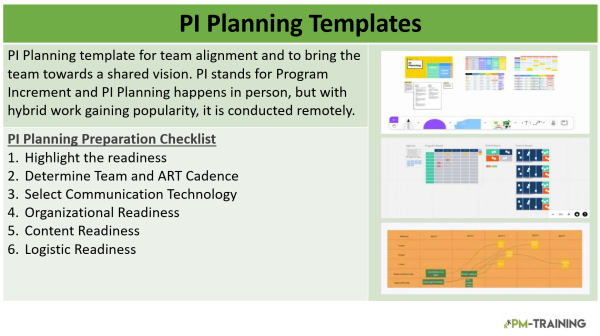
A PI Planning checklist must be followed for better results. Below are the components of this checklist:
Highlight the readiness
Confirm the linkage of special features with the definition of ready. Some of the examples of DoR are non-functional requirements documents, illustrations, the business value, acceptance criteria, testers, and SMEs/
Determine Team and ART Cadence
The spread for calendar bids includes sprint planning, backlog refinement, and sprint review for planning. Calendar invites for ART consists of PO sync, ART sync, system demo, and scrum to scrum meeting for the PI planning.
Select Communication Technology
The team members must be skilled to use agile communication technology like Zoom, MURAL, and Miro.
Organizational Readiness
Product strategy alignment between participants, stakeholders, and business owners must be there.
Content Readiness
It’s important to secure an obvious perception that the relevant stakeholders can participate. Therefore, PI Planning must contain executive briefings, product vision briefings, and architecture vision briefings.
Logistic Readiness
This includes securing and preparing spaces for collocated planning, and final distributed planning.
The PI Planning agenda which includes the presentation of vision and context and is followed by team breakouts where teams create iteration objectives and plans for the upcoming increment. This event is facilitated by a Release Train Engineer and includes members of the ART and is conducted within the Planning and Innovation iterations. Holding this event during the IP iteration helps avoid schedule impact and the capacity of other iterations. PI Planning is conducted in two days but can take more time to accommodate different time zones.
PI Planning vs Sprint Planning
The main difference between PI planning and sprint planning is that PI planning occurs between teams and sprint planning is an event for team members. The difference is the hierarchy and the scale. Sprints are subsets of the PI Planning and are for a single sprint. PI Planning, on the other hand, is executed for 8 to 12 weeks over four sprints. Its purpose is to obtain the business value vision.
PI Planning Template Miro
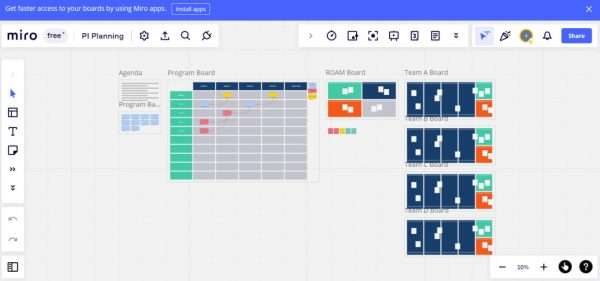
PI Planning Template Powerpoint
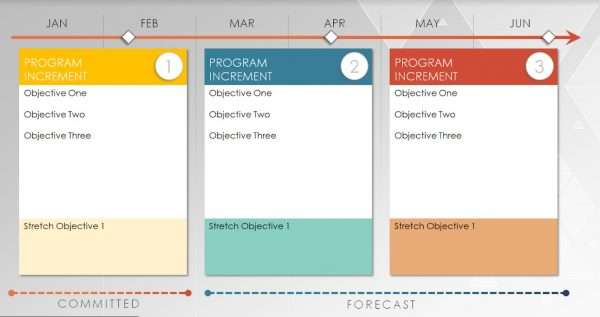
PI Planning Template Mural
PI Planning Template Creately
PI Planning Template Figma
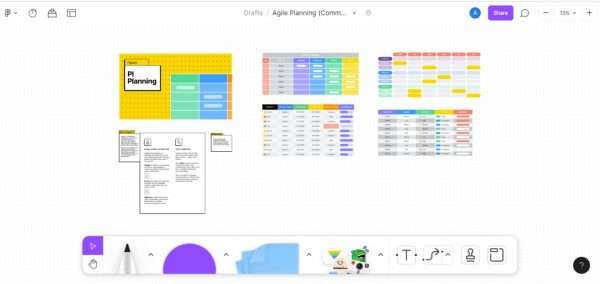
PI Planning Template Fellowapp
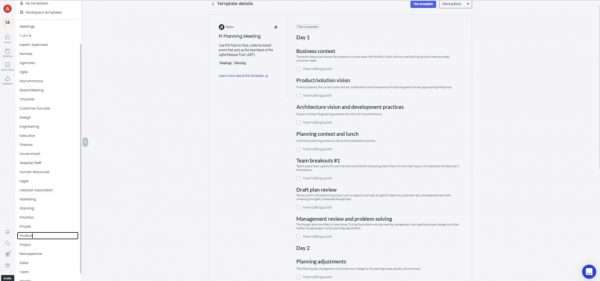
PI Planning Template Lucidspark
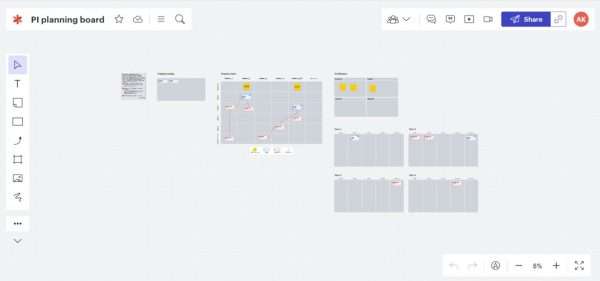
PI Planning Template Draft.io
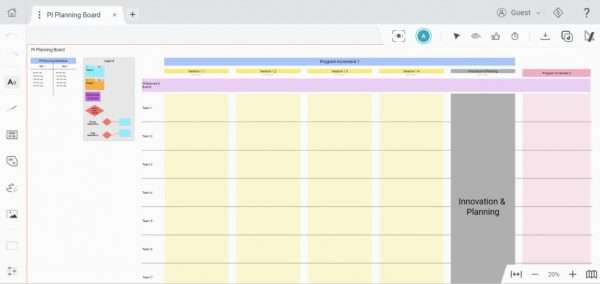
PI Planning Template Klaxoon
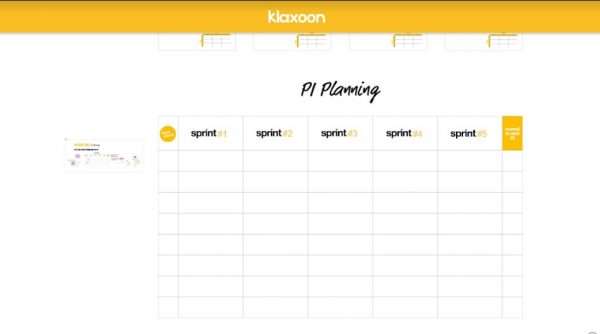
PI Planning step by step
Follow the following steps to get the most from the PI Planning templates:
- Define your objectives
- Work with your development team
- Make every team fill their boards with features, objectives, and stories.
- Gather everyone together to fill the board
- Make use of sticky notes templates to fill stories and features
- Add any impediments or risks to the project with the Owned, Resolved, Mitigated, and Accepted Board
PI Planning anti-patterns
One of the most common PI Planning anti-patterns is when teams focus on a single iteration at one time and attempt to create a plan for the first iteration, followed by diving into the second iteration. This is alarming as we do not see the bigger picture of the whole process. And we get to the review of the draft plan, and teams don’t have a high-level, an end to end plan, required for managing problem-solving activity and review.
Additionally, teams work through iterations and concentrate on the creation and loading of stories, they do not sufficiently collaborate on dependencies with other teams. This can lead to radical changes during breakouts on day two.
When to use PI planning
It is designed to facilitate developers in overcoming coordination challenges across processes, teams, and programs. Teams are gathered where they each work on a part of a larger goal.
The Agile Release trains are gathered after 8 to 12 weeks to conduct PI planning. This event is a way to work towards a common goal and that every team member is satisfied with the vision.
General considerations
- Gather everyone – Ensure all teammates, project owners, and stakeholders are available for the session. For remote sessions, choose a popular video conferencing tool.
- Clarify team goals – After the team is gathered for the articulation of a vision for a solution or product, decide on How you will fill the needs of the customer? How do market changes impact your capability to do so?
- Draft a plan – Gather components and make a document for teams and management to review.
PI Planning FAQs
What is the ultimate goal of the PI Planning event?
The ultimate goal of the PI Planning event is to gather multiple teams for collaboration, be more flexible, increase transparency, and align project goals and strategies.
During the PI Planning who owns feature priorities?
The Product Managers own the feature priorities during PI Planning. The development team owns estimation and user stories planning. UX team and engineers work towards the validation of the planning. The goal is team alignment with each other and with the goal.
Why is a confidence vote held at the end of PI Planning?
The confidence vote is an important part of the PI Planning and concludes the event. The teams must be confident to meet the objectives of the work they commit to. The release train engineer asks the team to vote.
What is the scrum master’s role in PI Planning?
They prepare system demos and facilitate event preparation. They help the team with capacity estimation for iterations, finalise objectives, and manage dependencies, timeboxes, and ambiguities during team sessions.

